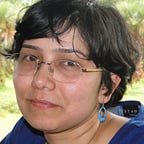The many moods of Ladakh (part 1)
We were moving through a world of white. There was snow on the mountainside beside the road, snow on the peaks all around us, snowflakes falling on the windshield, and fog moving in. It was four o’clock in the afternoon but the car dashboard displayed an outside temperature of -3 degrees Celsius. We were on Baralacha Pass, the mountain pass that connects Ladakh with Lahaul valley in Himachal, returning from a two-week vacation in early October.
I was scared. There were very few vehicles on the road, just an occasional truck or car. Our phones weren’t working. What if we had a flat tyre, or some other kind of car trouble? Would we be stranded up here for the night? Could we get across before evening fell? Even though we had registered our vehicle at the check post at Sarchu, who knew how long it would take for it to be flagged if we did not emerge safely at Darcha on the other side?
Jispa to Leh
Our onward journey had been so different! We had left Jispa in Lahaul at seven in the morning and set out for Leh with great anticipation. We knew that it would be a long and difficult journey — a distance of 335 km over mountainous terrain, including four high mountain passes. Still, we had rested for a day in Jispa and explored the beautiful little villages around it, and our spirits were high.
There were four of us — my husband and I, and another couple — setting out on this road trip to Ladakh that had been lovingly planned for years. The sun was shining and there were very few other tourists (mid-September is when the tourist season tapers off) as we drove along the beautiful tarmac road up to Baralacha La. The Bhaga river gleamed below us, as we wound our way up the mountain. Higher up, we encountered its source — Suraj Taal — a glittering blue lake high up in the mountains.
We took our time, stopping to take photographs, to build cairns of seven stones for good luck and just revel in the beauty of these mountains. Too much time, in fact, because the effect of lingering at those heights would show before the day was out! As we travel north through the Himalaya ranges, every successive valley floor is higher than the last. Most of our driving today would be at a height of 14000 ft or more, where the air has ~60% of the oxygen at sea level.
We stopped at Sarchu, near the border between Himachal and Ladakh, for a cup of tea. There is a cluster of dhabas here — a collection of tin-roofed shacks that serve hot beverages, Maggi noodles, and meals. Inside, there are rugs spread out on wide benches, and a stack of thick blankets in a corner. For the traveller who is stranded in bad weather, these dhabas save the day by providing accommodation in inhospitable weather.
Then on to the Gata loops — 21 hairpin bends that wound up and up to Nakee La (15,547 ft) before we came down to the small hamlet of Whisky Nala on the other side.
The effects of oxygen deprivation were starting to show by now. All of us had mild headaches and my fingers were tingling despite having taken Diamox in the morning. So each of us took a few puffs from the oxygen canisters we had brought along. By the time we crossed Lachung La (16,616 ft) and reached Pang, our friend was in bad shape. Fortunately, Pang has a hospital tent manned by the army and we were able to get oxygen administered to her there. The rest of us had our O2 levels checked, and were sternly instructed by the nurse not to linger any more at high altitudes on the way to Leh!
Easier said than done. To my astonishment, the road climbed up from Pang to reach the More Plains — which is really a high altitude plateau at 15,750 ft! On and on we drove on this beautiful ribbon of road on flat land surrounded by brown peaks. And finally, the ascent up to Taglang La (17,582 ft), which we reached at 5:30 in the evening. We managed to descend from the pass by dusk, and still had another two hours of driving before we reached Leh that night.
Continued in Part 2
Credit for photos, and all that driving: Somendu Dutta
